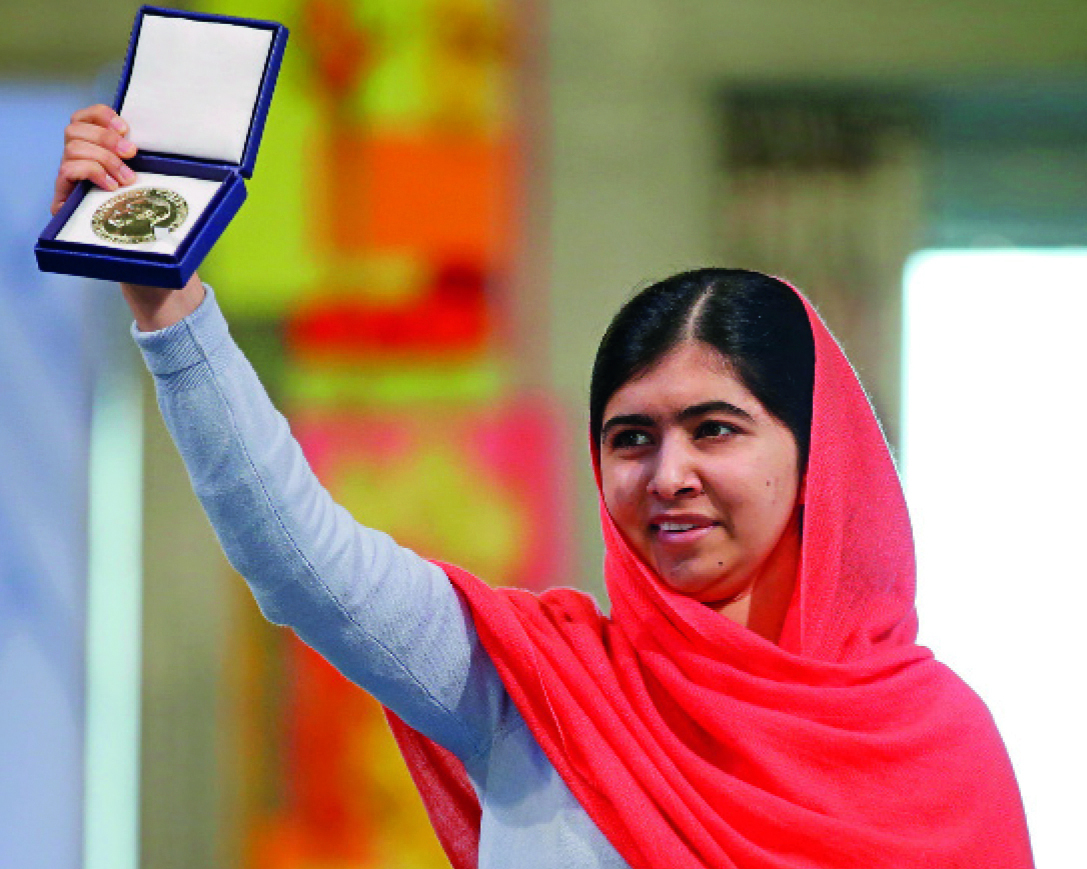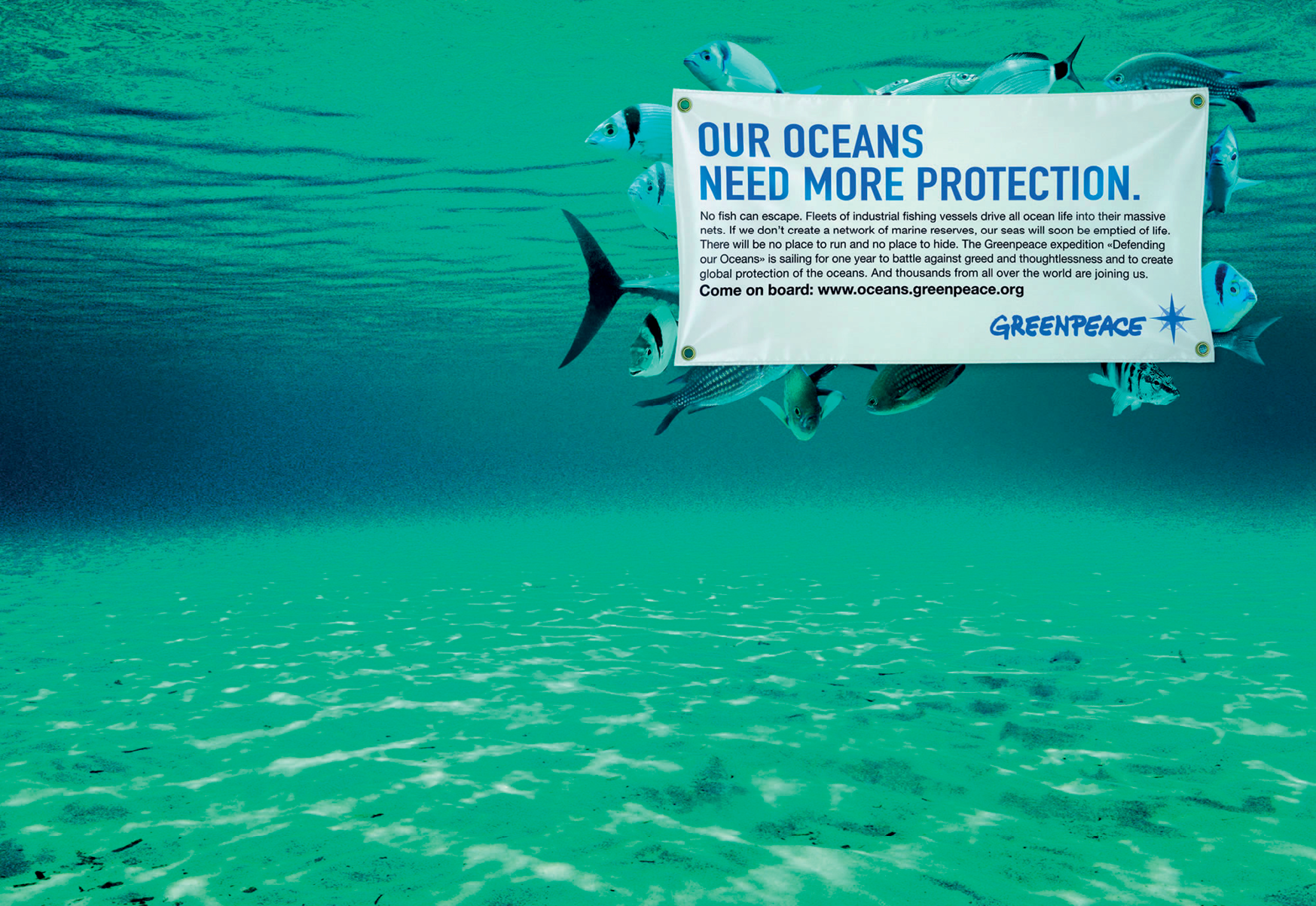
Appendices

dere is móre
UNIT 1 – Faça no caderno as questões de resposta escrita.
1. Assinale o pronome que corresponde às expressões sublinhadas.
Versão adaptada acessível
Atividade 1
Assinale o pronome que corresponde às expressões "Covid restrictions", "scientists", "The prime minister", "MPs [members of Parliament]" e "One scientist adviser to the government".
Boris Johnson’s decision to end Covid restrictions (um) (they/them) is “very brave or very stupid”, scientists (dois) (they/them) say. The prime minister (três) (he/him) told MPs [members of Parliament] (quatro) (they/them) the legal requirement to self-isolate could be scrapped by the end of this month […]. One scientist adviser to the government (cinco) (he/him) said he was “very concerned that the number of cases remains very high.”
LOVETT, S; COWBURN, A. ‘Very brave or very stupid’: Scientists’ warning over early ending of Covid rules in England. The Independent, 10 fevereiro 2022. Disponível em: https://oeds.link/kqpvv4. Acesso em: 13 abril 2022.
2. Complete o texto com o pésti simplôl dos verbos entre parênteses.

WHAT ARE YOU LOOKING AT?
How Saul Leiter (um) espaço para resposta (embrace) mystery and rewrote the rules of photography
By Lucy DAVIES
In 1946, Saul Leiter (dois) espaço para resposta (move) into an apartment that (três) espaço para resposta (occupy) the entire floor of a building on New York’s Lower East Side. One of the finest photographers of a golden generation that also (quatro) espaço para resposta (include) Diane Arbus and William Eggleston, for the next 60 years Leiter (cinco) espaço para resposta (use) the warren-like space as both home and studio, rarely venturing more than a block or so beyond its front door. […]
DAVIES, L. How Saul Leiter found dreamland on his doorstep. The Telegraph, 30 janeiro 2022.
3. Use os verbos a seguir no pésti simplôl para completar a continuação do texto da questão 2.
be (quatro vezes) attend board

Leiter (um) espaço para resposta 12 when, in 1935, his mother gave him his first camera […]. At 20, he (dois) espaço para resposta still torn between following in the footsteps of his father, a rabbi, or fulfilling his dream of becoming an artist. In the early 1940s, he even (três) espaço para resposta rabbinical college in Cleveland, though the moment paintings of his (quatro) espaço para resposta accepted for an exhibition, he (cinco) espaço para resposta a bus to New York. His decision to forge a new life as an artist (seis) espaço para resposta something his parents would never understand.
DAVIES, L. How Saul Leiter found dreamland on his doorstep. The Telegraph, 30 janeiro 2022.
4. Complete o fragmento de notícia a seguir com as palavras entre parênteses na ordem correta.

WOMEN BUILDING A (um) espaço para resposta (FUTURE / SUSTAINABLE): THE (dois) espaço para resposta (MEXICAN / VIOLINIST) WHO SAVED THE SIERRA GORDA
6 February 2022 – Climate and Environment
Forty years ago, Martha Isabel Ruiz Corzo, known as Pati, left the Mexican city of Querétaro with her family in search of a simple (três) espaço para resposta (life / rural). Instead, she ended up leading and inspiring a group of some 17,000 local (quatro) espaço para resposta (activists / environmental), devoted to protecting the remote and beautiful Sierra Gorda.
In the early 1980s, Pati had a (cinco) espaço para resposta (career / successful) in Querétaro, located about two hours north of Mexico City, as first violinist of the city’s orchestra, a soloist in two choirs, and a music teacher in a prestigious (seis) espaço para resposta (private / school).
‘Simpler life’
She decided she wanted to lead a simpler life and moved her family to Sierra Gorda. […] And, soon after arriving, she realized the extent to which the environment was being ruined, with rampant tree cutting, uncontrolled fires, and the indiscriminate opening of trails. This inspired her to work closely with the (sete) espaço para resposta (community / local), replanting trees to bring back the forest.
UNITED NATIONS. Women building a sustainable future: the mexican violinist who saved the Sierra Gorda. UN News, 6 fevereiro 2022. Disponível em: https://oeds.link/Vje7NN. Acesso em: 22 maio 2022.
5. Converse com um colega sobre o que vocês fizeram no fim de semana. A conversa pode ser mediada por um aplicativo de mensagens. Veja a seguir algumas sugestões de perguntas e de verbos a serem usados no pést.
What did you do? Where were you?
be play study
UNIT 2 – Faça no caderno as questões de resposta escrita.

1. Ouça o seguinte áudio e faça o solicitado.
Biografia um
Título: Introduction
Data: dois de dezembro de dois mil e treze
Fonte: Jim William West
INTRODUCTION. 2013. 1 vídeo (1 minuto 55 segundos). Publicado pelo canal Jim William West. Disponível em: https://oeds.link/JSOBTz. Acesso em: 3 julho 2022.
Clique no play e acompanhe a reprodução do Áudio.
- Qual é o objetivo do texto?
b. Que fato marcou a vida do personagem?
2. Observe a imagem e responda às questões a seguir.

- O que você sabe sobre Malala iuçáfizái?
b. Observe a imagem anterior, relacionada ao vídeo cujo áudio você vai ouvir. Que fato na vida de Malala você acha que ela ilustra?

3. Ouça esta biografia de Malala e faça o solicitado.
Biografia dois
Título: Malala Yousafzai, Activist | Biography
Data:
Fonte: Biography
MALALA Yousafzai, Activist | Biography. 2018. 1 vídeo (3 minutos 17 segundos). Publicado pelo canal Biography. Disponível em: https://oeds.link/3zuJpN. Acesso em: 30 junho2022.
Clique no play e acompanhe a reprodução do Áudio.
- Qual fato mencionado no áudio se relaciona com a imagem da questão 2?
- As ameaças que Malala sofreu.
- O reconhecimento mundial do seu trabalho.
- O que Malala fez para expressar suas opiniões.
- Responda às seguintes perguntas relacionadas às informações do item anterior.
- Qual ameaça Malala sofreu?
- Qual foi o grande acontecimento na vida de Malala, quando ela tinha dezessete anos?
- Em sua opinião, qual é a importância da mensagem de Malala para o mundo?
4. Complete o trecho da biografia com alguns dos verbos a seguir no pést.
be (quatro vezes) change begin become start write

Malala Yousafzai (I) espaço para resposta born on July 12, 1997, in Mingora, the largest city in the Swat Valley […].
In 2007, when Malala (II) espaço para resposta ten years old, the situation in the Swat Valley rapidly (III) espaço para resposta for her family and community. The Taliban (IV) espaço para resposta to control the Swat Valley and quickly (V) espaço para resposta the dominant socio-political force throughout much of northwestern Pakistan. Girls (VI) espaço para resposta banned from attending school, and cultural activities like dancing and watching television (VI) espaço para resposta prohibited. […]
THE NOBEL FOUNDATION. Malala Yousafzai: biographical. [sem local], 2015. Disponível em: https://oeds.link/8Hx6wR. Acesso em: 13 abril 2022.
5. Escolha a preposição de tempo correta para completar mais um trecho da biografia de Malala.

[…] Her activism resulted in a nomination for the International Children’s Peace Prize (um) espaço para resposta (in / on) 2011. That same year, she was awarded Pakistan’s National Youth Peace Prize. But not everyone supported and welcomed her campaign to bring about change in Swat. (dois) espaço para resposta (In / On) the morning of October 9, 2012, 15-year-old Malala Yousafzai was shot by the Taliban.
[...]
After the shooting, her incredible recovery and return to school resulted in a global outpouring of support for Malala. (três) espaço para resposta (In / On) July 12, 2013, her 16th birthday, Malala visited New York and spoke at the United Nations. Later that year, she published her first book, an autobiography entitled “I Am Malala: The Girl Who Stood up for Education and Was Shot by the Taliban.” (quatro) espaço para resposta (In / On) October 10, 2013, in acknowledgement of her work, the European Parliament awarded Malala the prestigious Sakharov Prize for Freedom of Thought.
[…]
(cinco) espaço para resposta (In / On) October 2014, Malala, along with Indian children’s rights activist Kailash Satyarthi, was named a Nobel Peace Prize winner. […]
THE NOBEL FOUNDATION. Malala Yousafzai: biographical. [sem local], 2015. Disponível em: https://oeds.link/8Hx6wR. Acesso em: 13 abril2022.
- Encontre, no penúltimo parágrafo do trecho anterior da biografia de Malala, duas expressões de tempo que ajudam a especificar o período em que os eventos mencionados ocorreram.
- Leia a biografia de Xirin ebadi e complete-a com os seguintes verbos, conjugados no pést.
be become succeed train
ABOUT THE AUTHOR
Dr. Shirin Ebadi is one of the leading human rights activists in the world and the author of the international bestseller Iran Awakening. Born in 1947, she (I) espaço para resposta in law and (II) espaço para resposta the first woman ever to serve as a judge in Iran. Following the Islamic Revolution, she (III) espaço para resposta dismissed from her post, but finally (IV) espaço para resposta in obtaining a lawyer’s license and setting up her own practice. Since then, she has represented the families of political victims, journalists, child custody cases and others. The recipient of many awards and accolades, today she lives in exile in the West and lectures widely around the world on human rights, justice and equality.

EBADI, S. Until We Are Free: My Fight for Human Rights in Iran. Nova York: Penguin, 2017.
8. Complete o trecho da biografia de rosa párquis a seguir com os verbos entre parênteses no pést . Em seguida, converse com um colega sobre o que entenderam da história de rosa párquis.

SUMMARY: A BIOGRAPHY OF ROSA PARKS
Rosa Parks, named “The Mother of the Modern-Day Civil Rights Movement”, (um) espaço para resposta (be) an African-American woman born in Tuskegee, Alabama in 1913. She is most well known for her stand against racial segregation on public buses in Montgomery, Alabama. Rosa (dois) espaço para resposta (refuse) to give up her seat for a white man and was arrested, charged with, and convicted of civil disobedience. Rosa (três) espaço para resposta (spend) most of her life fighting for desegregation, voting rights, and (quatro) espaço para resposta (be) active in the Civil Rights movement that has shaped social code in the Unites States. No matter what city she (cinco) espaço para resposta (live) in, she found a way to stay involved in the community and always (seis) espaço para resposta (seem) to have a way to voice her thoughts and feelings about inequalities in society. Rosa (sete) espaço para resposta (have) a knack for doing this effectively, but quietly and was known for her saying, “Do what is right.”
ROSA PARKS FACTS.COM. Summary: A Biography of Rosa Parks. [sem local], [2019?]. Disponível em: https://oeds.link/I7I8fN. Acesso em: 13 abril2022.
9. Encontre, no fragmento da biografia a seguir, conectivos que expressem os seguintes sentidos.

In 1891, Curie finally made her way to Paris and enrolled at the Sorbonne. She threw herself into her studies, but this dedication had a personal cost: with little money, Curie survived on buttered bread and tea, and her health sometimes suffered because of her poor diet. […]
BIOGRAPHY.COM EDITORS. Marie Curie Biography. [sem local], [2019?]. Disponível em: https://oeds.link/YkGKfH. Acesso em: 13 abril 2022.
- Adição.
- Contraste.
c. Razão (causa).
UNIT 3 – Faça no caderno as questões de resposta escrita.

1. Ouça este fragmento de entrevista e faça o solicitado.
Entrevista
Título: Hair expert on the perception of black people’s hair
Data:
Fonte: Primedia Broadcasting
HAIR expert on the perception of black people’s hair. 2016. 1 vídeo (3 minutos 4 segundos). Publicado pelo canal Primedia Broadcasting. Disponível em: https://oeds.link/MzXSeL. Acesso em: 21 maio 2022.
Clique no play e acompanhe a reprodução do Áudio.
- A entrevista debate questões ligadas ao estilo de penteado e ao córte de cabelo adotado por pessoas descendentes de:
- africanos.
- asiáticos.
- europeus.
- oceânicos.
- O que o entrevistado considera positivo?
- Explique o sentido dos “” mencionados pelo entrevistador naquele contexto.
- Complete os trechos a seguir com ken ou kenóti
- aiespaço para respostaespaço para resposta
- espaço para resposta
- espaço para resposta
WORLD VISION. Child Rights: history, facts & how to protect them. [sem local], [2019?]. Disponível em: https://oeds.link/zBYasy. Acesso em: 13 abril 2022.
- O que está sendo indicado por ken e kenóti nos exemplos anteriores?
- Habilidade/inabilidade.
- Permissão/proibição.
- Possibilidade/impossibilidade.
- Elabore, com um colega de classe, uma pequena lista de direitos e deveres para os estudantes da sua escola, usando ken e kenóti. Veja os exemplos.
A student can ask for more explanation when he/she doesn’t understand.
A student cannot bully other students.
- Encontre os conectivos nas frases a seguir e classifique-os de acordo com o sentido que indicam: adição, contraste, alternância, condição ou propósito.
12 CHILD Rights Everyone Should Know. Children First Canada. [sem local], 2 novembro 2020. Disponível em: https://oeds.link/rJrG7i. Acesso em: 13 abril 2022.
UNIT 4 – Faça no caderno as questões de resposta escrita.
1. Leia o verbete de enciclopédia a seguir e responda.
African Union (AU)
African intergovernmental organization. It is the successor to the Organization of African Unity (OAU). The AU was established in 2002 to promote unity and solidarity among African states, spur economic development and promote international cooperation. The OAU was established in 1963 with similar goals, and during its tenure, the group mediated several border disputes on the African continent. More economic in nature and with a stronger mandate to intervene in conflicts, the AU replaced the OAU in 2002. In 2004, the AU’s Pan-African Parliament was inaugurated and the organization agreed to create a peacekeeping force. The AU’s headquarters are in Addis Ababa, Ethiopia.
AFRICAN Union (AU). In: Britannica Concise Encyclopedia. Chicago: Encyclopaedia Britannica, 2006. página 24.
- Quando foi criada a ? Com que propósito?
- Onde esse texto foi publicado originalmente?
c. Ele é semelhante aos textos da seção rídin desta unidade? Que nome é dado a textos como esse?
- A função principal de textos como esse é
- emitir opiniões.
- contar histórias.
- fornecer informações.
- Compare novamente esse texto com os da seção rídin. Então, numere os itens a seguir de acordo com a ordem em que eles aparecem nos textos.
- Título.
- História.
- Definição.
- É possível encontrar nesses textos alguma expressão coloquial? Por quê?
- Agora observe os verbos do verbete da questão anterior e faça o que se pede.
- Por que no verbete predominam verbos no passado?
- Escreva no caderno a fórma no infinitivo de cada verbo a seguir e diga se ele é regular ou irregular.
- uas
- Que terminação indica que um verbo regular está conjugado no pésti simplôl ?
- Complete o excerto do verbete de enciclopédia a seguir com o pést dos verbos entre parênteses.
CIVIL RIGHTS MOVEMENT
[...]
Before the Civil War most blacks in the United States (I) espaço para resposta (be) slaves, who (II) espaço para resposta (have) no civil rights. After the war (III) espaço para resposta (end) in 1865, blacks (IV) espaço para resposta (make) some progress. Between 1865 and 1870 the 13th, 14th, and 15th amendments to the U.S. Constitution (V) espaço para resposta (end) slavery and (VI) espaço para resposta (give) citizenship and voting rights to former slaves.
These rights (VII) espaço para resposta (be) often ignored, however, especially in the South. To keep poor African Americans from voting, some states (VIII) espaço para resposta (make) people pay a tax or pass a difficult test before they could vote. Violent groups such as the Ku Klux Klan (IX) espaço para resposta (try) to scare blacks away from the polls. Southern governments (X) espaço para resposta (pass) laws to keep African Americans separate, or segregated, from whites. In many places, for example, black children (XI) espaço para resposta (be/not) allowed to attend the same schools as white children.
Some African Americans (XII) espaço para resposta (resist) this unfair treatment all along. But not until the 20th century did blacks organize themselves into a movement. The most important leader in the early years of the civil rights movement (XIII) espaço para resposta (be) W.E.B. Du Bois. In 1909 he and others (XIV) espaço para resposta (form) the National Association for the Advancement of Colored People (NAACP). The NAACP (XV) espaço para resposta (use) the courts to fight for civil rights for blacks.
Events of the 1950s
The civil rights movement (XVI) espaço para resposta (win) its first major victory in 1954, in the court case of Brown vs. Board of Education of Topeka, Kansas. NAACP lawyers (XVII) espaço para resposta (lead) by Thurgood Marshall (XVIII) espaço para resposta (argue) the case before the U.S. Supreme Court. The Court (XIX) espaço para resposta (rule) that separate schools for whites and blacks (XX) espaço para resposta (be) unequal and therefore (XXI) espaço para resposta (violate) the Constitution.
On December 1, 1955, in Montgomery, Alabama, a black woman named Rosa Parks (XXII) espaço para resposta (be) arrested for refusing to give up her seat on a bus to a white person. Blacks (XXIII) espaço para resposta (protest) her arrest by boycotting (refusing to use) the bus system. Late in 1956 the Supreme Court (XXIV) espaço para resposta (rule) that segregation on public transportation (XXV) espaço para resposta (be) unconstitutional. One of the leaders of the boycott (XXVI) espaço para resposta (be) a young minister named Martin Luther King, Jr. In the late 1950s King (XXVII) espaço para resposta (organize) the Southern Christian Leadership Conference, a group dedicated to peaceful civil rights activities.
Many white people (XXVIII) espaço para resposta (resist) change, especially in the South. In 1957 whites (XXIX) espaço para resposta (riot) at a high school in Little Rock, Arkansas, when the first black students (XXX) espaço para resposta (enroll) there. U.S. President Dwight D. Eisenhower (XXXI) espaço para resposta (send) soldiers to restore order.
[…]
CIVIL Rights Movement. In: Britannica Student Encyclopedia. Chicago: Encyclopaedia Britannica, 2015.
4. Complete o trecho de um diálogo do documentário com as fórmas verbais apropriadas no pésti simplôl .
Interviewer: (I) espaço para resposta lonely for a young girl entertaining in these strange bars? (be / it)
Nina Simone: (II) espaço para resposta extremely, extremely lonely. (be / it)
Interviewer: (III) espaço para resposta your social life? (ruin / it)
NS: I never (IV) espaço para resposta much of one. (have)
Interviewer: Why (V) espaço para resposta with it? (keep on / you)
NS: […] (VI) espaço para resposta money. (need / I) (VII) espaço para resposta always a matter of necessity. (be / it) […] I (VIII) espaço para resposta I was going to stay in show business. (not / even / know)
WHAT Happened, Miss Simone? Direção: Liz Garbus. Park City, Utah: Netflix, Radicalmedia, Moxie Firecracker Films, 2015. Son., color. Legendado.
UNIT 5 – Faça no caderno as questões de resposta escrita.

1. Complete os relatos orais com os verbos a seguir no pést contínuous
animate (duas vezes) go on say talk (duas vezes) target
Relato histórico oral
Título: Above Us Only Sky
Data: 2018
Fonte: DVD Above Us Only Sky
JOHN e Yoko: Só o Céu como Testemunha. Direção de Michael Epstein. [sem local]: Eagle Rock Film Productions, 2018. Son., color.
Clique no play e acompanhe a reprodução do Áudio.
“We (I) espaço para resposta about the government, we (II) espaço para resposta about what (III) espaço para resposta in Vietnam, the Cultural Revolution in China, the Japanese student’s movement. The things that (IV) espaço para resposta them were the things that (V) espaço para resposta our, you know, whole generation. The war in Vietnam in particular. Difficult to explain now to people how much that war did to radicalize us. […]. The world’s largest, most powerful military nation bombing what was essentially a peasant country. They (VI) espaço para resposta deliberately (VII) espaço para resposta civilians.” (Tariq Ali)
“The youth of that time (VIII) espaço para resposta, ‘we don’t like the world we were born into. We want it to be different. We want to change it’.” (Dan Richter)
JOHN & Yoko: Above Us Only Sky. Direção: Michael Epstein. [sem local]: Eagle Rock Film Productions, 2018. Son., color. Legendado.
- Releia os relatos anteriores e marque as respostas corretas.
- De que período tratam os relatos de Tariqui Ali e dan richiter?
- Anos 1950.
- Anos 1960.
- Anos 1970.
- Anos 1980.
- Anos 1990.
- A quem, além de si mesmo, Tariqui Ali se refere quando utiliza o pronome “uí”?
- Civis vietnamitas.
- dan richiter.
- Estudantes japoneses.
- Djón e .
- Todas as pessoas.
- De que período tratam os relatos de Tariqui Ali e dan richiter?
3. Complete o fragmento de artigo jornalístico a seguir com a forma apropriada dos verbos entre parênteses.
HOW THE VIETNAM WAR (um) espaço para resposta (push) MLK [Martin Luther King Jr.] TO EMBRACE GLOBAL JUSTICE, NOT ONLY CIVIL RIGHTS AT HOME
January 12, 2022
On July 2, 1964, Martin Luther King Jr. (II) espaço para resposta (stand) behind President Lyndon Baines Johnson as the Texan (III) espaço para resposta (sign) into law the Civil Rights Act of 1964. […]
King (IV) espaço para resposta (call) the law’s passage “a great moment … something like the signing of the Emancipation Proclamation by Abraham Lincoln.” Johnson (V) espaço para resposta (recognize) King’s contributions to the law by gifting him a pen used to sign the historic legislation.
[…]
But by the start of 1967, the two most famous men in America (VI) espaço para resposta (be) no longer on speaking terms. In fact, they would not meet again before King fell to an assassin’s bullet on April 4, 1968.
King (VII) espaço para resposta (be) foremost a minister who pastored to a local church throughout his career, even while he (VIII) espaço para resposta (do) national civil rights work. And he (IX) espaço para resposta (become) concerned that his political ally Johnson (X) espaço para resposta (make) a grave moral mistake in Vietnam. […]
SIRACUSA, A. How the Vietnam War pushed MLK to embrace global justice, not only civil rights at home. The Conversation, 12 janeiro 2022. Disponível em: https://oeds.link/jWmzoq. Acesso em: 13 abril 2022.
4. Complete o fragmento de artigo jornalístico com os conectivos a seguir.
after although and (cinco vezes) if so that
A MEETING OF THE MINDS
Lennon (I) espaço para resposta Ono met [Pierre] Trudeau on Parliament Hill in Ottawa. […]
Their primary topic of conversation was the Cold War. They agreed mutual trust had to be created (II) espaço para resposta “disarmament (III) espaço para resposta peaceful diplomatic relations could begin.” Each of them — Trudeau and Lennon — would work “in very different ways toward this goal.” (IV) espaço para resposta Trudeau was more than 20 years older than Lennon (V) espaço para resposta the two men came from such very different worlds, it was a remarkable meeting of minds, personalities (VI) espaço para resposta agendas. The meeting was supposed to last 15 minutes. It lasted 50.
(VII) espaço para resposta Lennon (VIII) espaço para resposta Ono left Trudeau, they met the media. (IX) “ espaço para resposta all politicians were like Mr. Trudeau, there would be peace,” Lennon told them. […]
MORRISON, R. 50 years ago, John and Yoko came to Canada to give peace a chance. The Conversation, 10 outubro 2017. Disponível em: https://oeds.link/RBttfG. Acesso em: 13 abril 2022.
- Mencione quais conectivos da atividade anterior indicam as seguintes ideias.
- Adição.
- Concessão.
- Condição.
- Propósito.
- Sequência.
UNIT 6 – Faça no caderno as questões de resposta escrita.

1. Escute uma cena de um filme de comédia. Em seguida, faça o que se pede.
Filme de comédia
Título: The Pink Panther 2
Data: February, 2009
Fonte: DVD The Pink Panther 2
THE Pink Panther 2. Direção: Harald Zwart. Estados Unidos da América: ême gê ême/Columbia Pictures, 2009. Blu-Ray (1 hora 32 minutos).
Clique no play e acompanhe a reprodução do Áudio.
- A brincadeira entre os dois personagens gira em torno
- do tipo de xampu.
- do sentido de um anúncio.
- da pronúncia da palavra “jojoba”.
- No filme, o sotaque dos personagens indica que
- os dois são falantes nativos de inglês.
- nenhum deles é falante nativo de inglês.
- apenas um deles é falante nativo de inglês.
c. Por que os personagens repetem a palavra “jojoba” várias vezes?

- Escute novamente a cena e escolha as opções adequadas.
- espaço para resposta
- rôme
- espaço para resposta
- espaço para respostaêndespaço para resposta
- espaço para resposta
- Responda às perguntas a seguir sobre a cena do filme de comédia.
- Que recurso é usado para criar o humor nessa cena?
- Por que você acha que , ao dizer “” no final da cena, reage com esse tom?
- De que maneira você completaria a fala final de para concluir essa cena?
- Complete as frases a seguir com informações suas.
-
- espaço para resposta
- espaço para resposta
- espaço para resposta
-
- espaço para resposta.
- espaço para resposta.
- espaço para resposta.
-
- Relacione as palavras destacadas nas frases ao sentido correspondente.
- Sentido literal.
- Sentido figurado.
Versão adaptada acessível
Atividade 5
Relacione as palavras "sunshine" e "sky" nas frases ao sentido correspondente.
- Sentido literal.
- Sentido figurado.
- sâncháine
- sâncháine
e.
UNIT 7 – Faça no caderno as questões de resposta escrita.

1. Ouça um relato histórico oral e responda às perguntas a seguir.
Relato histórico oral um
Título: rréchitégui (cerquilha, sustenido)tê bê tê – PELÉ – FIFA Classic Player
Data: dezenove de novembro de dois mil e dezessete
Fonte: FIFATV
PELÉ | FIFA Classic Player. 2017. 1 vídeo (6 minutos 13 segundos). Publicado pelo canal FIFA. Disponível em: https://oeds.link/qoHYh2. Acesso em: 22 maio 2022.
Clique no play e acompanhe a reprodução do Áudio.
- Sobre quem é o relato?
- Qual é seu nome verdadeiro?
- Que recorde dele é mencionado?
d. Onde e em que ano ele nasceu?

2. Ouça este fragmento de relato acerca da vida de um grande desportista do passado e cite dois assuntos sobre os quais a sinceridade do desportista incomodava as autoridades.
Relato histórico oral dois
Título: Muhammad Ali: Looking at a remarkable life
Data:
Fonte: Primedia Broadcasting
MUHAMMAD Ali: Looking at a remarkable life.2016. 1 vídeo (3 minutos 33 segundos). Publicado pelo canal Primedia Broadcasting.isponível em: https://oeds.link/FFjPI9. Acesso em: 21 maio 2022.
Clique no play e acompanhe a reprodução do Áudio.
- Ouça novamente o relato oral sobre um dos maiores jogadores europeus (página 147, Relato histórico oral) e responda.
- Sobre que jogador de futebol é o relato histórico?
- Onde ele nasceu?
- Por que o uso do verbo tchu bi no pésti simplôl é comum em relatos históricos orais sobre pessoas?
- Leia a reportagem sobre a final do Campeonato Mundial de Clubes de 2021 da fifa e faça o que se pede.

CHELSEA WIN FIFA CLUB WORLD CUP AFTER EXTRA-TIME WIN OVER PALMEIRAS
Chelsea won the FIFA Club World Cup after securing a 2-1 victory over Palmeiras after extra-time at Abu Dhabi’s Mohammed bin Zayed Stadium on Saturday.
Kai Havertz scored a penalty in the 117th minute as the Premier League giants won the competition for the first time in the club’s history.
[…]
Both sides failed to create many clear-cut opportunities in the first half and Chelsea suffered a massive blow when Mason Mount was brought off after 29 minutes with an injury.
The game came to life after 54 minutes when Callum Hudson-Odoi produced a fine cross which was converted from Lukaku with a clinical header.
However, Palmeiras were awarded a penalty 10 minutes later after VAR adjudged Thiago Silva to have handled the ball from a corner.
Veiga stepped up and converted the spot kick to equalise for the Brazilians as the game pettered out into extra time.
As the match looked set for a penalty shootout, Chelsea were awarded a penalty after VAR adjudged Luan Garcia to have blocked Cesar Azpilicueta’s strike with his hand.
Havertz converted the penalty with ease and Palmeiras’s misery was complete when Luan was sent off in stoppage time for a desperate tackle on the German forward.
CHELSEA win FIFA Club World Cup after extra-time win over Palmeiras. ESPN, 12 fevereiro 2022. Disponível em: https://oeds.link/lwSQPt. Acesso em: 13 abril 2022.
- Encontre no texto cinco frases na voz passiva. Dica: uma das fórmas verbais aparece em dois exemplos.
- Os exemplos encontrados estão no
- passado.
- presente.
- futuro.
c. Nesses exemplos, como o verbo foi colocado na voz passiva?
5. Leia o fragmento de relato de e responda.

The city of Boston is staging its annual marathon. Kathrine Switzer became the first woman to officially run the race 45 years ago, despite stewards trying to physically force the 20-year-old off the road. Here she recalls how a female runner caused such a fuss.
The gun went off and down the street we went. At the start of a marathon you are so relieved. You have done all these months of training, it’s like going to Mecca. At last, you’re the pilgrim, you’re making your voyage, so I felt wonderful.
Two miles (3km) into the race, a truck came along packed with timers, scorers and officials. Behind that was the press truck which was loaded with photographers – and they went crazy seeing a woman in the race!
Then all of sudden I heard a scraping noise of shoes running faster than mine.
I turned around and I saw the angriest face I had ever seen. It was a race official, Jock Semple. He grabbed me by the shoulders, spun me back, and screamed: “Get the hell out of my race”.
He started trying to rip off my bib numbers.
With that Arnie jumped in and said: “Leave her alone. She’s OK, I’ve trained her. You stay out of this.”
He [Jock Semple] came back and grabbed me again. He had me by the sweatshirt and I was trying to get away from him.
He was pulling me back when all of sudden, my boyfriend, Tom Miller, came running full tilt and hit this race official with the most beautiful cross-body block you could ever imagine, and sent him flying through the air.
Arnie’s eyes got huge. He said: “Run like hell,” and down the street we went.
I was crying, I was so terrified that my boyfriend had hit this official. I was embarrassed and really, really scared.
I realised at that moment that everything had changed. Suddenly it became a contest of proving that women could do it.
BOSTON, 1967: When marathons were just for men. BBC News, 16 abril 2012. Disponível em: https://oeds.link/EMw6r8. Acesso em: 13 abril 2022.
- De que trata o relato?
- Quem tentou impedir de atingir seu objetivo?
- Por que ele fez isso?
- Quem a ajudou?
- Por que o feito de se tornou importante?
- Releia o relato e faça o que se pede.
- Encontre no texto três frases que indiquem ações em progresso no passado.
- Como é formado o tempo verbal que indica essas ações?
UNIT 8 – Faça no caderno as questões de resposta escrita.

1. Ouça o anúncio de campanha social e faça o solicitado.
Anúncio de campanha social
Título: Emma Watson apresenta a maior aula do mundo
Data:
Fonte: ONU Brasil
EMMA Watson apresenta a maior aula do mundo. 2017. 1 vídeo (5 minutos 13 segundos). Publicado pelo canal ONU Brasil. Disponível em: https://oeds.link/sBFr1Q. Acesso em: 21 maio 2022.
Clique no play e acompanhe a reprodução do Áudio.
- Na campanha, Êma Uátsan propõe
- lutar contra a desigualdade global.
- lutar pela educação feminina.
- acabar com a pobreza.
- respeitar o planeta.
b. Os estudantes de sua escola participam de campanhas sociais? Você acha isso importante? Por quê?

2. Ouça este anúncio publicitário de uma organização humanitária e faça o solicitado.
Anúncio de organização social
Título: World Food Programme East Africa Crisis Appeal PSA – Canada 40Sec Radio Edit
Data:
Fonte: VOEastAfrica
WORLD Food Programme East Africa Crisis Appeal PSA – Canada 40Sec Radio Edit. 2011. 1 vídeo (39 segundos). Publicado pelo canal VOEastAfrica. Disponível em: https://oeds.link/5DsxqE. Acesso em: 21 maio 2022.
Clique no play e acompanhe a reprodução do Áudio.
- O objetivo deste anúncio é conseguir:
- apoio político.
- auxílio financeiro.
- trabalho voluntário.
- transformação social.
- Para que a organização precisa de ajuda?
c. Escreva o nome de três países mencionados no áudio e o continente a que eles pertencem.
3. Leia este folheto de campanha social e faça o que se pede a seguir.

OUR OCEANS
NEED MORE PROTECTION.
No fish can escape. Fleets of industrial fishing vessels drive all ocean life into their massive nets. If we don’t create a network of marine reserves, our seas will soon be emptied of life. There will be no place to run and no place to hide. The Greenpeace expedition “Defending Our Oceans” is sailing for one year to battle against greed and thoughtlessness and to create global protection of the oceans. And thousands from all over the world are joining us.
a. Relacione as palavras do texto às seguintes imagens.
fleet of vessels net sea vessel
I.

II.

III.

IV.

- O que a campanha tenta preservar?
- Quem é apontado como responsável pelo problema apresentado?
- Qual é a solução apontada pelo texto?
- Converse com um colega de classe, presencialmente ou por meio de um aplicativo de mensagens, sobre as coisas que você faz agora, mas não conseguia ou não podia fazer quando não sabia inglês. Use ken e cúld nas fórmas interrogativa, afirmativa ou negativa.
- Elabore, junto com um colega de classe, um folheto para uma campanha em defesa do meio ambiente direcionada ao cidadão comum, usando ken e .
- Complete essas dicas acerca de como lidar com a violência usando do quadro.
give in stand up step in take away (duas vezes) take back think for
a.
Take a stand. If you witness any form of violence or abuse, (I)

, (II)

, or shout out that the offender is actually the uncool one, and the violence has to stop.
b.
Be an individual. (I)

yourself. Don’t follow the crowd and don’t (II)

to peer pressure. Don’t participate in any forms of violence or abuse just because your friends are.
c.
(I)

the power. Offenders act violently or abusevily to gain power. By not participating, you (II)

the power from the offender and pass it to the victim.
d.
Be a friend. Help the person who is being abused by inviting them to participate in school activities. This will

the feeling of being alone.
NEWFOUNDLAND LABRADOR CANADA. Tips for Youth to Stop Violence. [sem local], [2019?]. Disponível em: https://oeds.link/ea8jRv. Acesso em: 13 abril 2022.